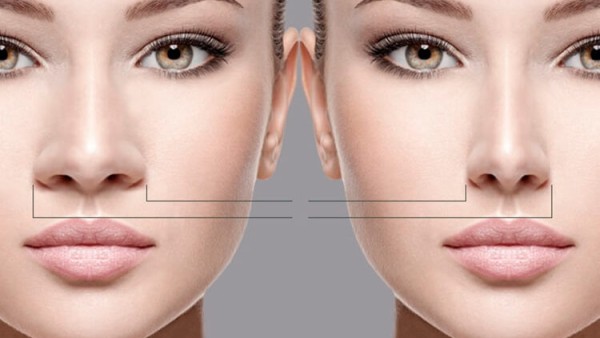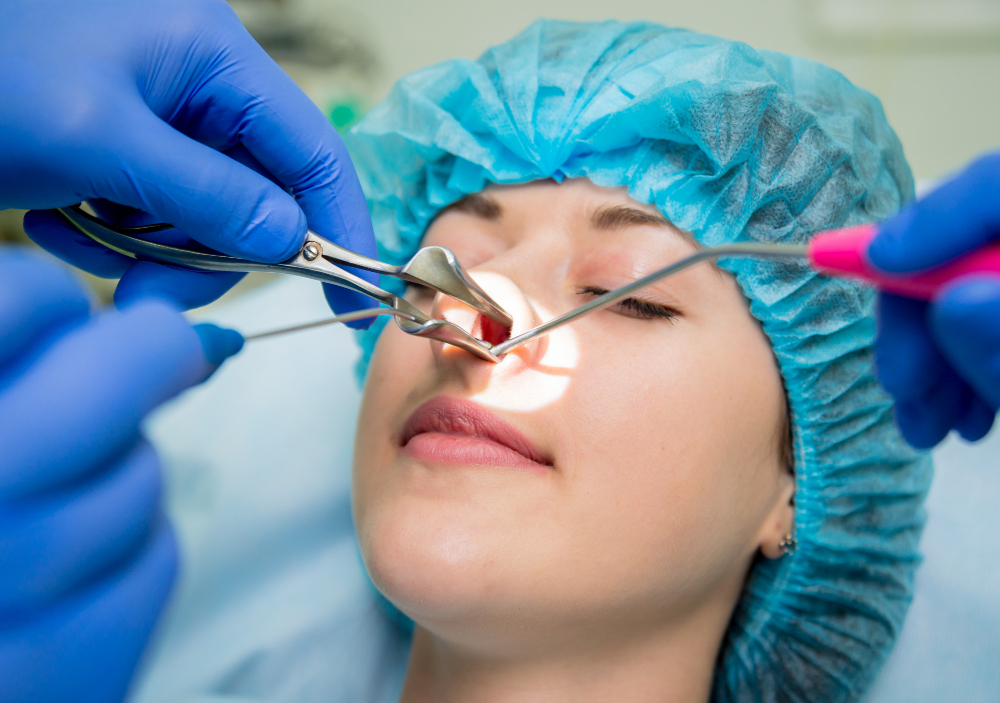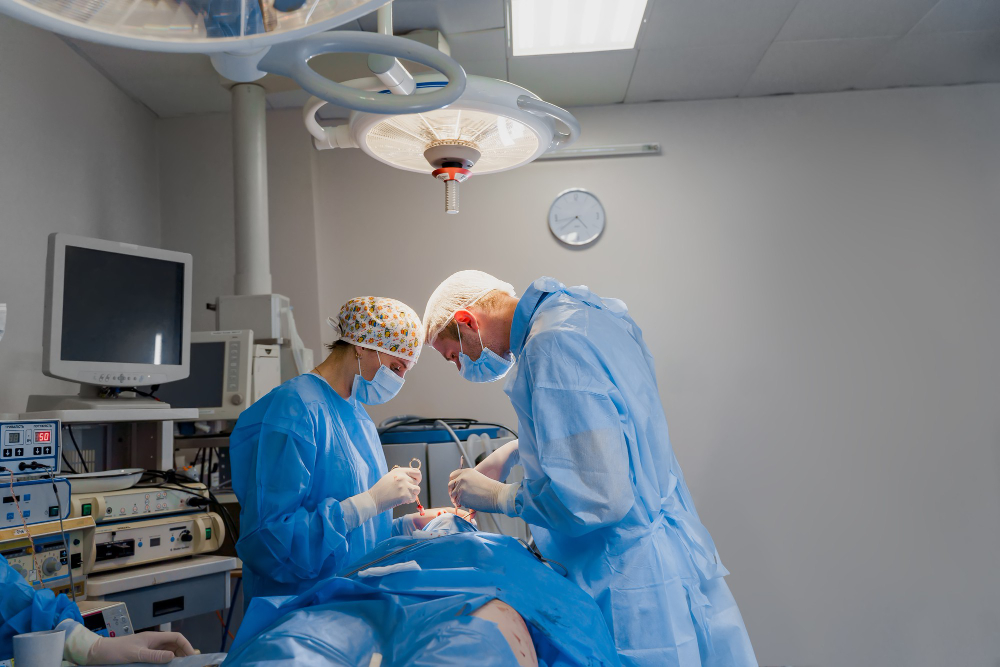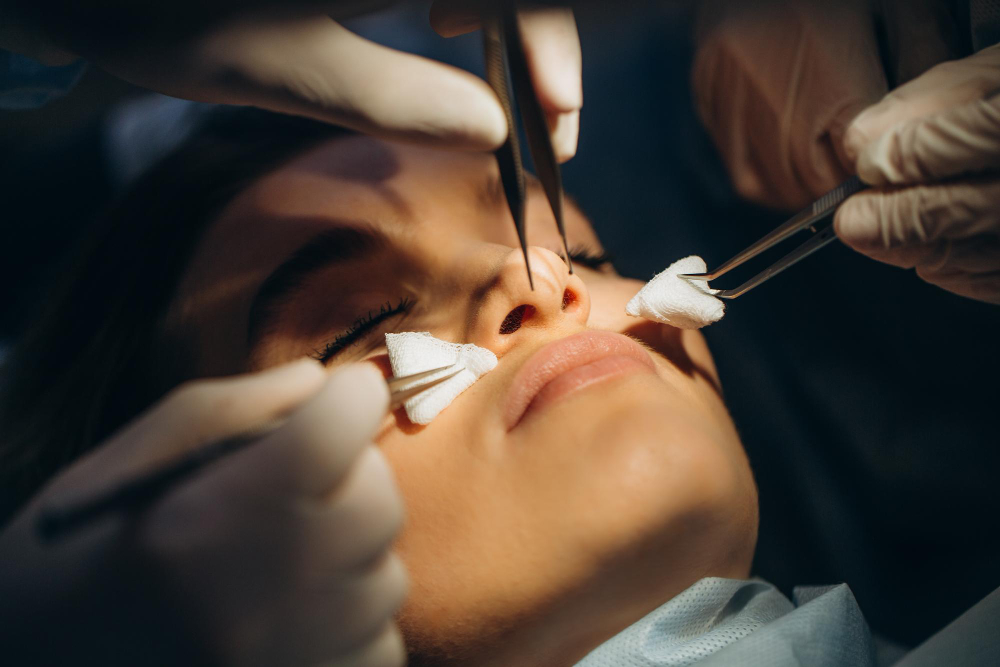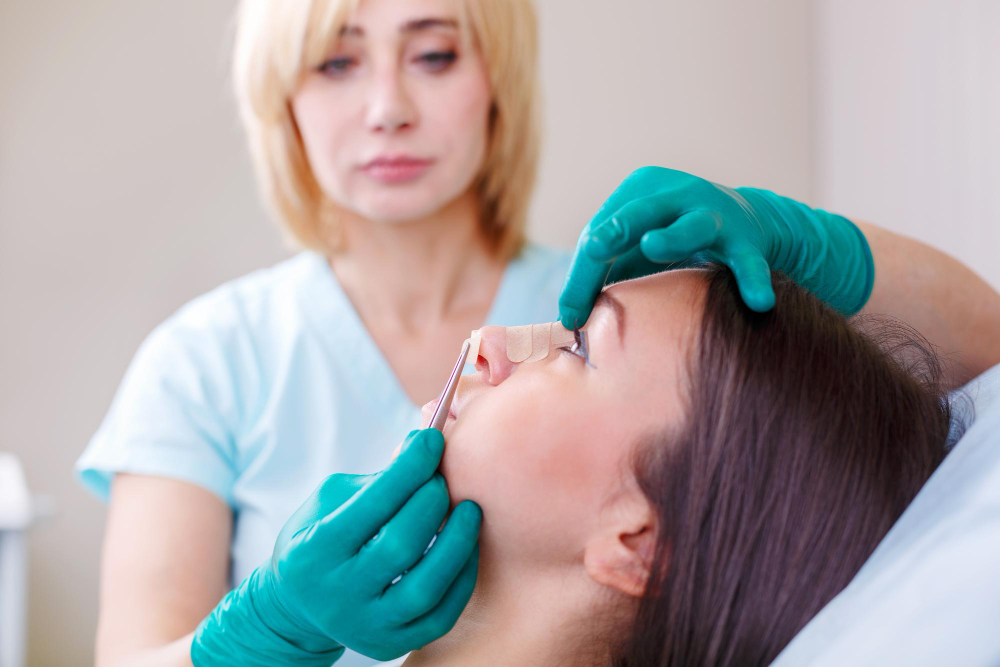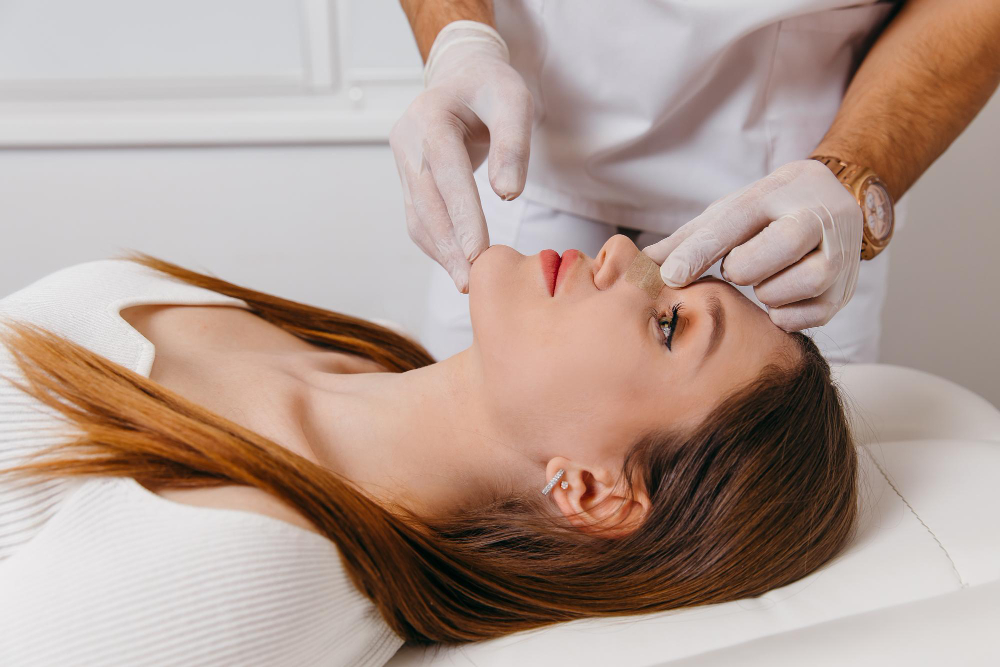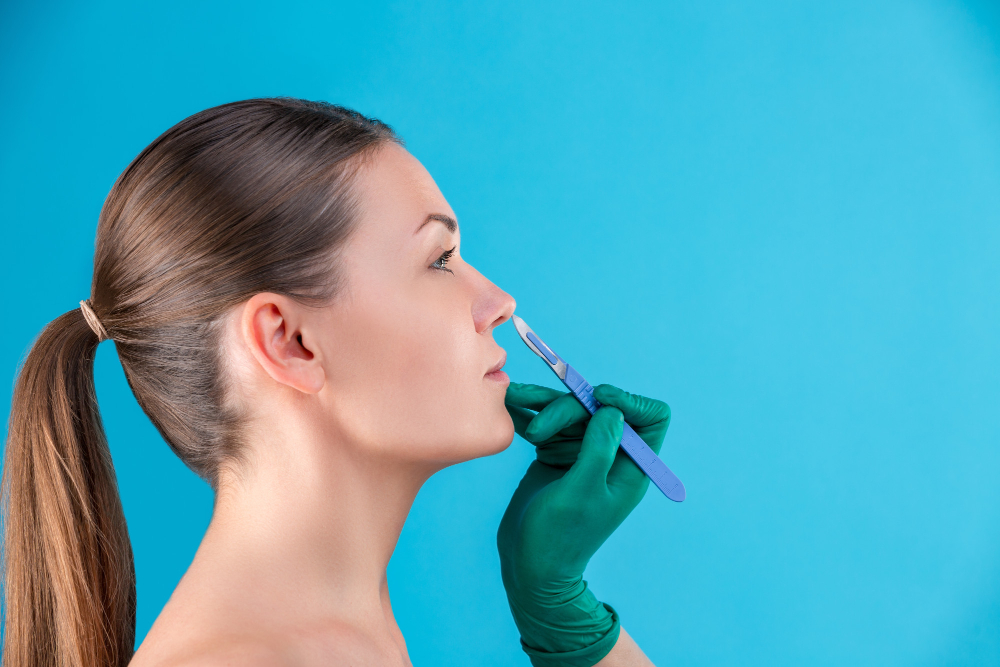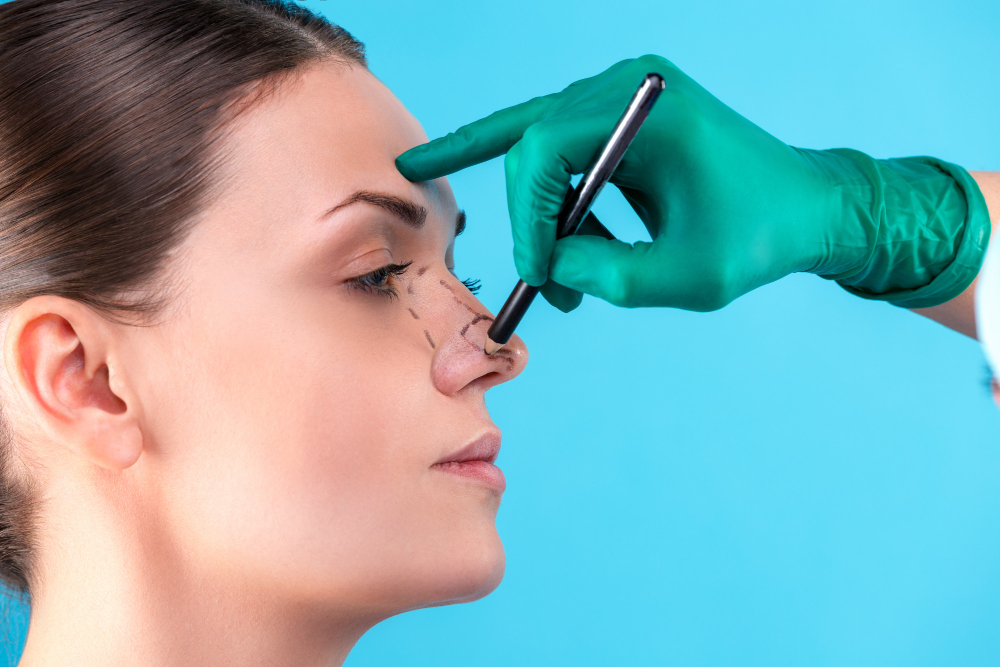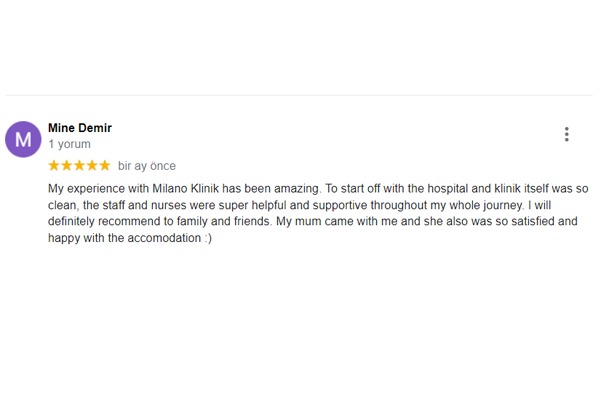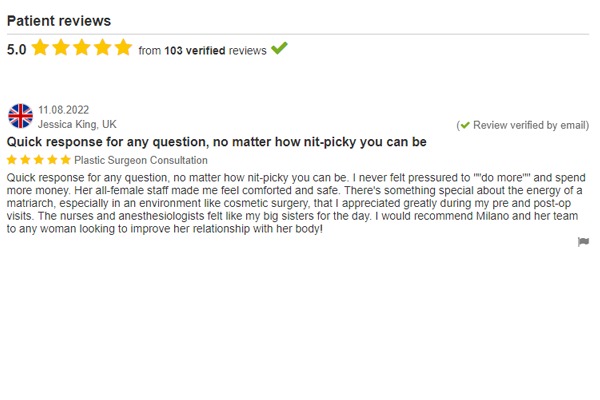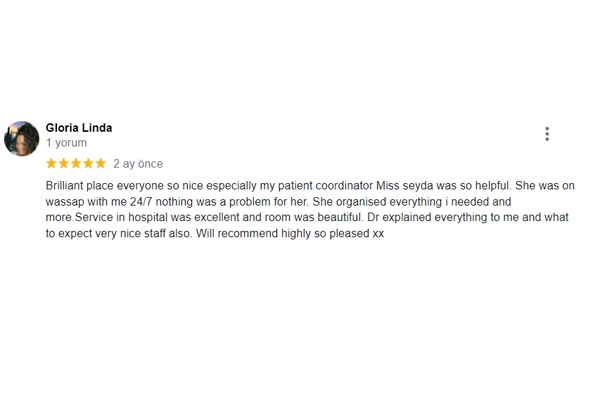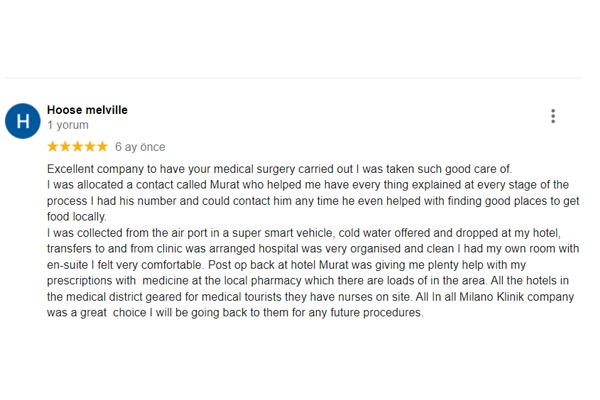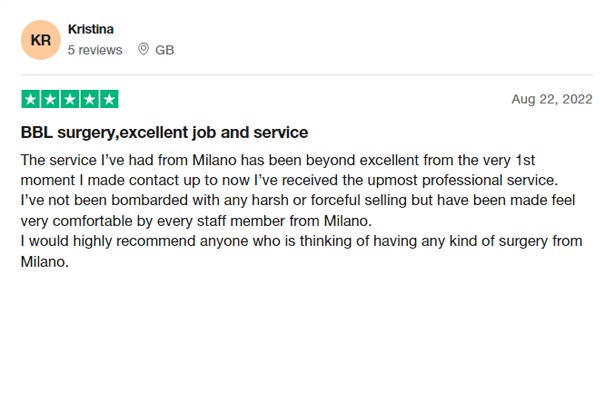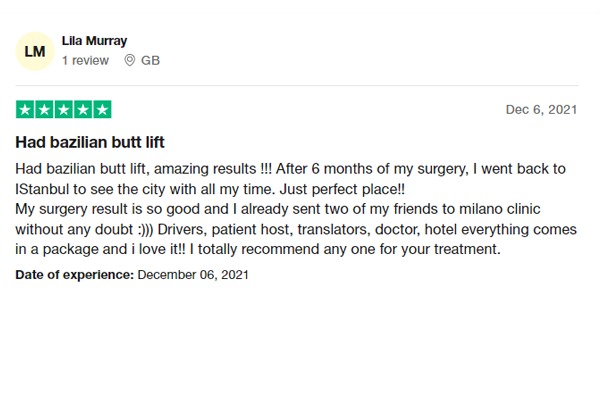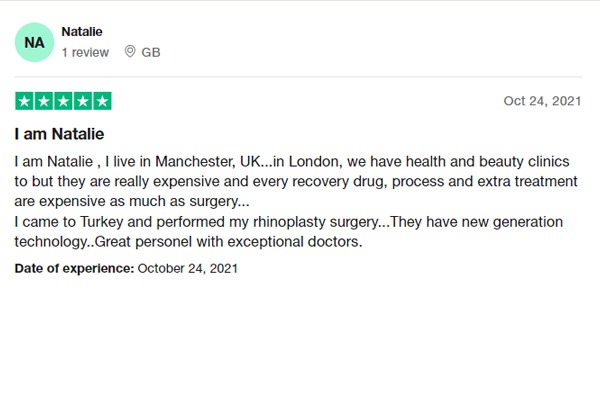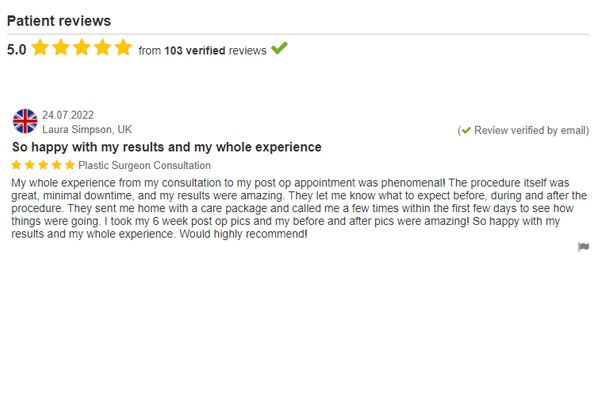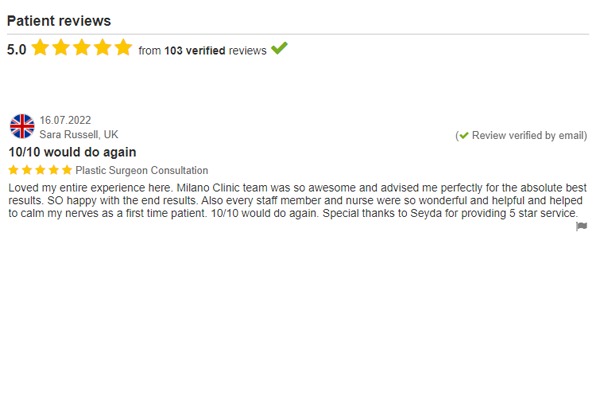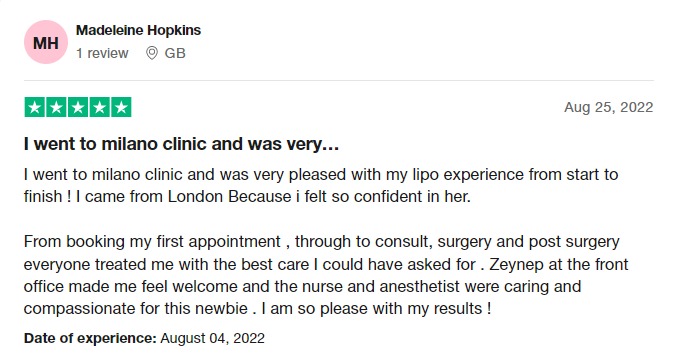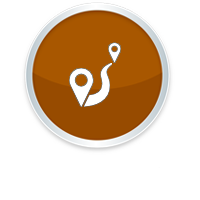RHINOPLASTY IN TURKEY
Real Testimonials
MilanoKlinik Comments
RHINOPLASTY IN TURKEY
The nose is known as the most important organ of facial aesthetics. With the help of experienced surgeons, rhinoplasty in Turkey can increase facial harmony and nose ratios. Also, deformities due to different causes and problems that prevent healthy breathing can be eliminated with this operation. And, of course, because of being the visual foreground, proportion problems that disturb the person are avoided.
RHINOPLASTY SURGERY CARD
| Duration of Operation | 3-4 Hours |
| Operation Area | Face |
| Anesthesia Type | General |
| Pain Treshold | 1 Week |
| Start Time | Post/Op 1 |
| First Shower | 1 Week Later |
| Recovery Time | 3-6 Months |
| Re-operation Status | 1 Year Later & It’s Up To Preferences |
| Gym-Cardio | 3 Months Later |
| Suture Mark | No Suture |
| Age Limit | Up From 18 |
| Suture Type | Meltable |
| Oedema Status | Average/Top |
| Hospitalize | 1 Night |
| Open/Close Technic | Optional |
WHAT IS RHINOPLASTY?
With rhinoplasty, a new shape can be given to the tip of the nose. Nose enlargement and nose reduction operations can be performed. In addition, rhinoplasty surgery is used for the removal of nasal flesh as well.
Rhinoplasty is not only for aesthetic purposes. The nose is responsible for passing quality air into the lungs. Therefore, in the process of breathing, nose aesthetics can be performed in order to avoid a different problem. Finally, the nose, eye, lips, cheeks, and mid-face area will also change.
Individually customized rhinoplasty operations begin with the presentation of sample profiles to the patient. In addition, after the comparison of the appropriate nose structure with the facial features, the decision is made and the necessary information is shared.
COST OF RHINOPLASTY
The most crucial aspect of rhinoplasty is to choose the right approach for your facial form and the price will be appropriate. Our doctors and specialists will work with you to determine the optimal nasal cosmetic procedure for your face, ensuring that you get the finest results possible. To get more information about the price of rhinoplasty in Turkey contact us!
Frequently Asked Questions About Rhinoplasty
What is the Aim of Rhinoplasty?
The aim of this operation is to provide a beautiful and aesthetic appearance of the nose area.
Who is a Good Candidate for Rhinoplasty?
There are some patients who should prefer nasal aesthetic operation. Congenital problems due to the proportion of the nose are a valid reason for having nose surgery. Although the concept of beauty is relative, the nose structure is thought to affect beauty. That is why it is known that especially women are very sensitive on this issue.
In addition to congenital problems, nasal surgery can be performed due to subsequent problems. Trauma and accidents and crashes or falls during childhood can cause nasal fractures. Accidents in adulthood may also distort the shape of the nose. Or it is known that people who are engaged in boxing also complain about this problem.
Nasal surgery should be applied as it affects healthy breathing. In fact, anyone who wants to correct the shape of the nose and eliminate the health problems associated with breathing can apply to nose surgery.
Before the Rhinoplasty Surgery
Before the procedure, blood thinning foods and medicines should not be consumed as in any surgical practice. Of course, aspirin and herbal medicines should be discontinued at least 10 days in advance. Herbal products are not recommended as they increase the bleeding status. The menstrual period in women should not interfere with this operation.
One of the most important requirements before nose surgery is smoking cessation. Smoking, which delays the healing process, can also cause severe pain after surgery. You should not use any medication without consulting the doctor before the nose surgery and should not use jelly, nail polish, or hair spray just before the procedure.
There are some important points evaluated in patients before nasal surgery. Firstly, the angle between the tip of the nose and the lip is checked. This angle should be 110 degrees for women and 80 degrees for men. Also, humpback structures consisting of cartilage and bone which are seen from the side of the nose are evaluated. In addition, the nose width and the angle of the nose with the forehead are generally checked and the surgery is decided.
Before applying nose surgery, it should be known that all the possibilities of technology are used for this process. Of course, with the right surgeon selection, you can be involved in a very successful process. This operation in many clinics provides different advantages for patients.
Points to Consider Before Nose Surgery
Patients should pay attention to some points before nose surgery. It should be noted that the surgeon will also give detailed information about this process.
First of all, it is necessary to follow the surgeon's recommendations and to perform the necessary medical health screenings. Diseases such as cold and flu that begin in patients before this process are an obstacle to nose surgery and some lab tests. Therefore, it is essential to give your doctor clear information about your current illnesses during anesthesia control.
The materials to be used in the operation are important. Anesthesia and clinical conditions should be checked in this step. It should also be investigated beforehand whether special nasal splints are used for the patients during the procedure. All these processes are very important for the patient's healing process.
How the Nose Surgery is Performed?
First, a detailed examination of the nose structure is made. The surgeon and the patient discuss to determine the most suitable nose shape according to the characteristics of the patient's face. It is important that the patient's demands are medically possible.
Nose surgery performed under general anesthesia lasting up to 1 to 4 hours begins with incisions through the nostrils. It then proceeds with correction of the deformities in the tip of the nose, the back of the nose, and the nose. Measures are also taken to prevent bruising and swelling after surgery.
The procedure is applied without damaging the cartilage tissues and bones in the nose. When the surgery is finished, a splint is placed inside the nostrils. A splint made of plaster is placed on the back. If an unusual complication is not seen, patients are discharged on the same day. Of course, after surgery, facial swelling, muscle and headache, and fatigue may occur.
The techniques applied in the nose reshaping process may be different. The skin of the nose is adapted to the structure created by surgery. Many plastic surgeons prefer open rhinoplasty procedures to perform nasal aesthetics.
How Long the Operation Takes?
The duration of the procedure can be extended from 30 minutes to 1 hour according to the anesthesia applied. In addition, this period may be up to 4 hours with additional interventions in the nose area.
General Principles in Rhinoplasty
Every surgeon has some principles before starting nose surgery. The first is to perform an operation that is compatible with the facial features of the patient and appears natural. Most patients do not want to be noticed to have nose surgery.
In addition, the operation should be performed without damaging the nose's underlying structure. In other words, after the nasal surgery, narrowing of the nostrils or collapse of the nasal infrastructure should not be experienced. The main goal is to make the existing nose structure more beautiful. And of course, the breathing function must be maintained.
Cartilage and bone can be reshaped during nose surgery. However, this process does not interfere with the skin of the nose. This is because permanent scars could be formed due to the removal of the skin from the nose.
After the cartilage and bone are reshaped with surgery, the nose skin will adapt to the new shape. So the new skeleton will look prettier. This may not be achieved in patients with thick nasal skin. Nevertheless, satisfying results are tried to be obtained with the rhinoplasty procedure.
Things to Consider After Rhinoplasty
The first morning after surgery, bruising and swelling may occur around the eyes. However, these complaints will heal within 3 days at most if you ice compress and apply bruise prevention cream after the operation. In the first days, breathing may not be easy due to crust and edema. However, since surgeons will instruct patients to use cream and spray, there will be no problems.
In the first 24 hours after nose surgery, there may be nasal pain as well as facial swelling. If headaches are accompanied by pain, the painkillers recommended by the surgeon can be used. On the first day, the patient should spend the day sitting with his head high.
The swelling around the eyes is expected to decrease after 3 days and disappear completely after 4 days.
Patients also wonder when they will return to daily life. A patient undergoing nose surgery should rest for the first 2 days. The patient can then return to work unless if he/she has a non-exhausting work life. However, movements that require effort should be avoided. Therefore, movements such as swimming, running, or gymnastics are strictly prohibited.
The nasal area should be protected from bumps for 8 weeks after surgery. Therefore, it is necessary to act gently while washing hair and face. The same applies when massaging. Contact lenses can be used according to the surgeon's approval. You should not wear glasses for 2 months after the removal of the splint in the nose.
Problems That Can Occur After Rhinoplasty
Some risks related to the operation may occur after the nose surgery. Early bleeding, infection, and deformity due to impact may occur.
Bleeding can also be expected during the first 48 hours. To reduce the risk of bleeding in case of dripping, blood thinners, and herbal mixtures should not be consumed. In general, bleeding can be controlled by means of gauze to be left at the tip of the nose.
There is a risk of infection after each surgery. The infection may rarely occur after rhinoplasty surgery. Also, antibiotics to be used with the recommendation of the surgeon will prevent this problem.
Finally, deformation due to impact may also be encountered. For this reason, it is important to be careful of impacts.
Late postoperative problems may also occur. These include not satisfying nasal shape expectations, respiratory problems, loss of tissue, and changes in sensation.
Tissue loss may result from surgery. Sometimes, not enough intervention to the wounds can delay healing. Surgeons will therefore constantly remind patients that smoking should be stopped. Since sensory changes may occur, temporary behavioral losses should not be mistaken.
Will There be Pain After the Surgery?
Pain occurs after surgery. However, the use of prescribed drugs after the operation relieves the pain in a short time.
How Should be the Care After Nose Surgery?
Postoperative recovery can be accelerated with careful care. In this process, firstly, the nasal tampons may bother the patient. During this period, you should try to breathe by mouth. The surgeon will remove the pads from the nose on check examination day. During this period the patient should take plenty of fluids. Light drinks such as water and juice will prevent dry mouth. The patient should also consume soft foods that can be easily chewed.
Medications other than those prescribed by the surgeon should not be used after rhinoplasty. In particular, blood thinners such as aspirin should not be used. You should keep your head high at all times to avoid damaging the nose dressing. The same applies to sleep. A small amount of discharge may come from the nose after surgery. If this liquid, which can be light red or pink, increases, you should contact your doctor.
Patients who will have surgery will have two layers of plaster and one layer of a splint. They are used to shape the nose. It is also important for the protection of the nose structure. It should be noted that the dressing should not be touched. Already within 1 week, the splint attached to the nose by dressing will be removed by the surgeon.
During this process, the nose should not be wiped and the nostrils should not be touched. Turtlenecks and t-shirts should be out of use during the healing process as they may damage the nose area. Patients should also be careful when brushing their teeth. It is important that the lips do not contract.
In the first 1 month after surgery, the nose should not be exposed to intense sunlight. In addition, after removing the dressings, outside the nose, discoloration and slight swelling may occur in the surrounding tissues. No intervention should be made for these self-correcting situations. After removal of the pads, the nostrils can be cleaned with a cleaning stick 2 times a day. However, the nose will still be blocked after the removal of the pads. Therefore, it is necessary not to blow off the first 10 days after dressing.
Can I Have the Same Problem Again After the Surgery?
The process called nose tip drop after nose tip removal is actually normal. The tip of the nose, which is in work due to edema, begins to descend with the disappearance of edema. Many patients define this condition as a nasal tip drop.
Is There Swelling and Bruising After the Rhinoplasty?
New techniques are used to prevent swelling and bruising. After surgery, the nasal cavity is placed in the buffer. On the back of the nose, a plaster wire is placed. Therefore, bruising and swelling can be experienced in very small levels.
Will There be Any Changes in My Speech After the Rhinoplasty?
There are no changes to the root area and no sound changes. As a result, your speech doesn't change.
